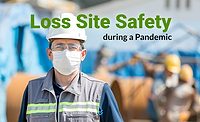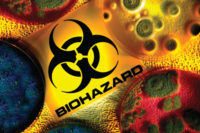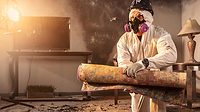Best Safety Practices during Hoarding Cleanup

Hoarding presents a very real danger to all those involved.
According to the American Psychiatric Association, hoarding disorders occur in an estimated 2 to 6 percent of the population and often lead to substantial distress and problems functioning. While the emotional and physical impact of this growing disorder is significant, the potential health and safety concerns including fire hazards, biohazards and health code violations are paramount and a major focus for the restoration and remediation industry today. While well-trained in restoring properties from fire, water or smoke damage, restoration professionals called upon to address a hoarding environment must consider a number of additional key factors. In particular, the very real threat of biohazard dangers including bloodborne pathogens carrying potential diseases like Hepatitis B, Hepatitis C or HIV/AIDS.
The following article provides best practices, based on 30 plus years of experience, in successfully remediating a hoarding environment including biohazard dangers, for the safety of all involved.
- Safety is the primary concern. Engage with fire, police and other relevant authorities to understand all the potential hazards before the cleanup begins.
- Often times biological hazards are present in hoarding situation including animal or human feces, mold, bacteria, and/or insects. Assume one or more of these hazards are present and wear full Personal Protective Equipment (PPE) including suits, mask, and nitrile gloves at all times.
- Bloodborne pathogens may be present as well within the hoard including contaminated needles or sharp objects. Dispose of these hazards within appropriate containers and make hand washing facilities readily available.
- Provide specialized training on biohazard cleanups for employees annually.
- Offer employees post-exposure evaluations and follow-up with medical personnel in the case of an exposure incident.
- Have an emergency action plan in place. Exit routes are likely obstructed and the greater amount of contents present a greater risk of fire. Communicate the action plan at the onset of the job and ensure all employees are present.
- Create a cleaning and staging area. This is preferably done outside as there isn’t typically enough space inside. If weather dictates that cleaning must take place indoors, empty one room and clean and disinfect the room completely with an EPA approved disinfectant.
- If working outside, be prepared with cleaning tables and if needed, pop up tents to create shade and shelter for employees.
- Be courteous and respectful to the hoarder at all times, sensitive to the individual’s feelings in the cleanup process.
- Enlist the assistance of one of the hoarder’s relatives and ask them to be present on the job to make decisions on what is discarded and what should be salvaged.
It is important to note that if a hoarding cleanup job does present biohazard concerns, the timeline of the service will increase given the additional number of precautions necessary. For example, in a recent hoarding clean up experience, the team at ARS was called upon to address a one-bedroom apartment filled with clothing, boxes, and paper goods piled from floor to ceiling. Upon arrival, the team was notified that the resident was HIV positive and syringes were found within the property. As a result, the crew needed to use tongs to individually remove several contaminated items to avoid contact. This slowed down the process significantly but ensured the safety of the crew in completing the job.

Safety is the primary concern. Engage with fire, police and other relevant authorities to understand all the potential hazards before the cleanup begins.
Given the sensitivities in a hoarding cleanup, it is also important to provide daily communication with the property owner and his or her family to ensure they are well informed as they navigate this difficult process. Daily email updates and personal phone calls are critical to keep the hoarder, and family up to date on the project timeline and set expectations. In doing so, you become a partner to the client, eliminate issues and build trust. The intangible elements often become the most important part of a job well done.
Hoarding presents a very real danger to all those involved. As the epidemic continues to rise, it is critically important for the restoration industry, called upon to safely and effectively decontaminate and sanitize properties, to understand and address all the potential hazards to keep both property owners and their own crews safe in the cleanup process.
Looking for a reprint of this article?
From high-res PDFs to custom plaques, order your copy today!








